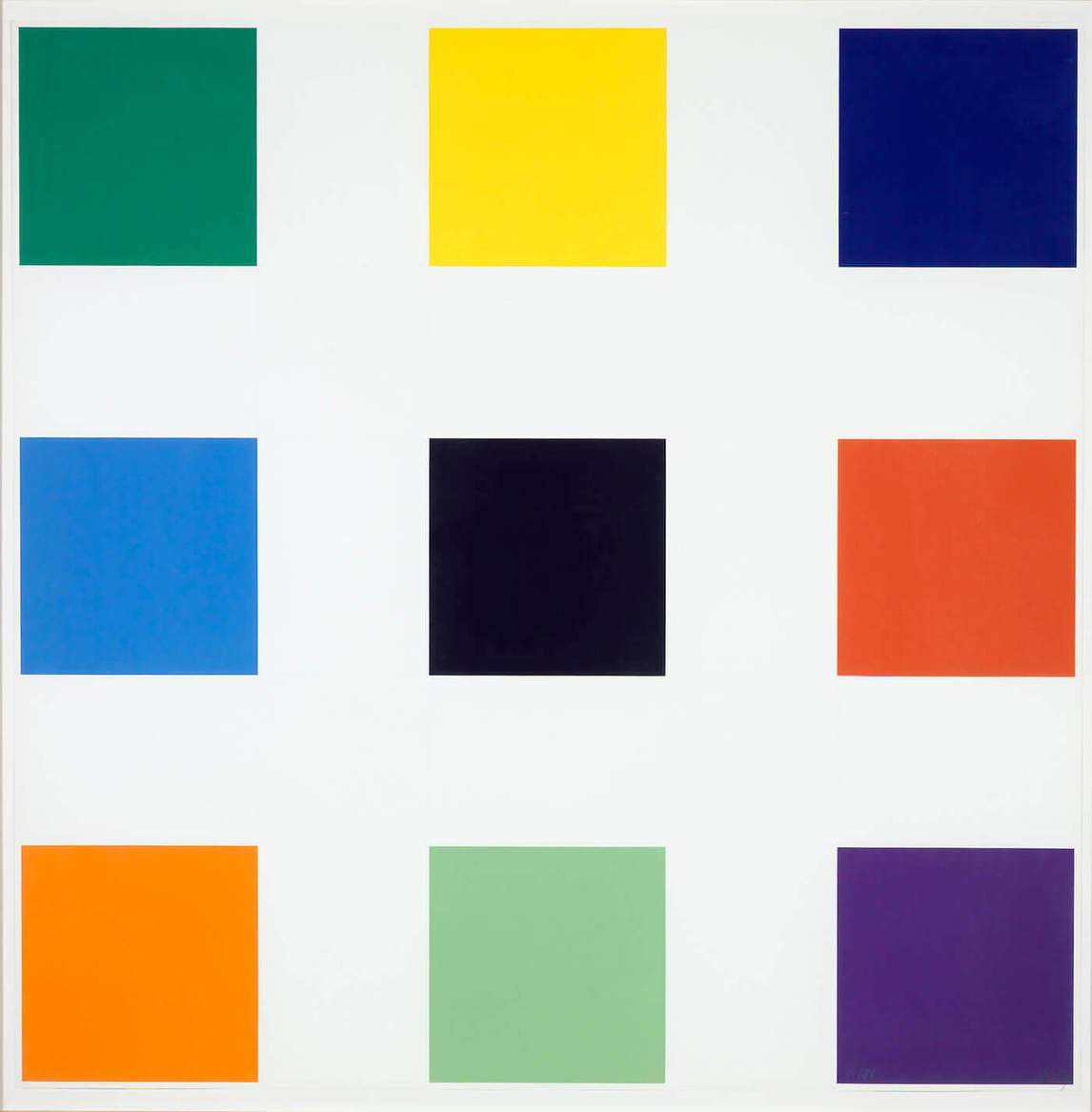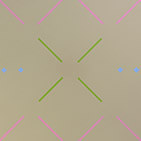Two Blues, Two Greys 1976

Yves Gaucher, Two Blues, Two Greys, 1976
Acrylic on canvas, 289.6 x 487.7 cm
Montreal Museum of Fine Arts, © Estate of Yves Gaucher / SODRAC (2015)
Two Blues, Two Greys consolidates a new direction in Gaucher’s painting. As indicated in its title it is composed of four horizontal bands of different colours, two of them blues and two greys, each differently weighed and measured. These are not four colours that work together easily; indeed, it is as if by heroic willpower that the painting comes together as a magnificent whole.
To extricate himself from the Grey on Grey series of 1967–69, Gaucher had to rethink the fundamentals of his painting, “blow it all up and think—pick up the pieces and examine them one by one, save what was worthwhile and throw away what wasn’t anymore and start again.” The paintings that emerge by 1971 are composed of horizontal bands of different greys, overlaid with thin white lines that span the entire width of the painting. Step by step over the next several years the number of white lines diminish and then disappear. The pale greys are replaced by more self-assertive hues. Two Blues, Two Greys, in sheer scale and apparent simplicity of construction, is the masterpiece of this phase of Gaucher’s work.

Gaucher’s focus is no longer to orchestrate dispersed dynamic movement but to put in concert the tensions created by opposing vast planes of colour of unequal weights and measures. Gaucher composed paintings like this by performing a series of successive moves, juggling his shifting variables. An adjustment in the colour or hue of a single band called for readjustments in the other three, each move assessed and reassessed—he often tried out alternative solutions on paper or smaller canvases—until finally the painting was perfectly “tuned” and each band in concert with the whole.
In paintings like Two Blues, Two Greys, Gaucher is interested not in the declaration of individual colours, but in how colours behave in dialogue. In this he differs from the American Ellsworth Kelly (b. 1923), whose work during this period is more concerned with the individuality of colours. If it is a question of abutted bands of colour, precise edges, and clean, uninflected surfaces, then Gaucher’s closest colleague is fellow Montreal artist Guido Molinari (1933–2004), who had made colour-stripe painting his trademark in the early 1960s. But Molinari equalizes the width of his vertical bands, neutralizing form. By not equalizing the width of his bands, Gaucher retains form as a container for colour, keeping both container and contained in constant play.

 About the Author
About the Author
 More Online Art Books
More Online Art Books
 Acknowledgements
Acknowledgements